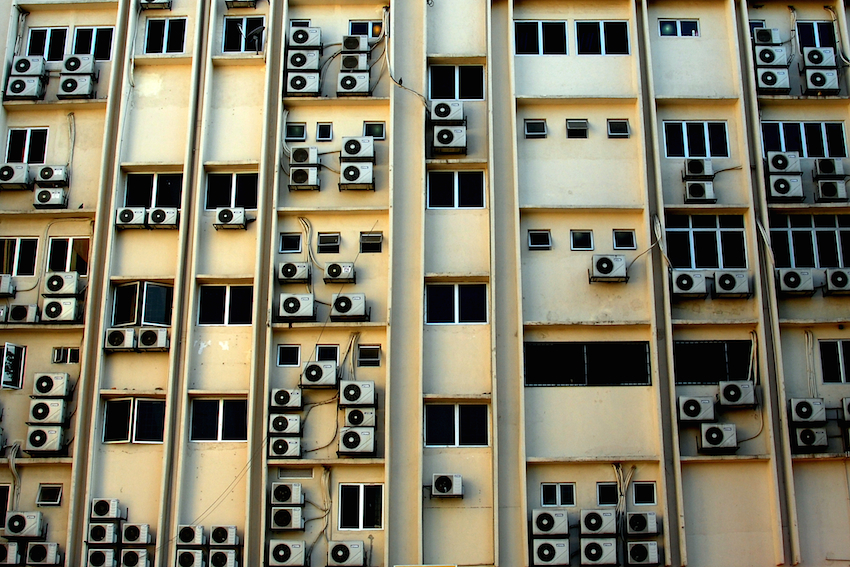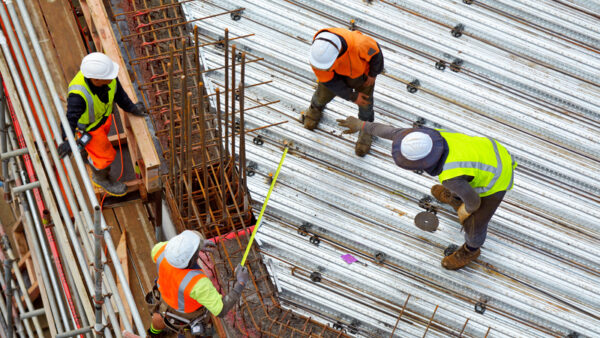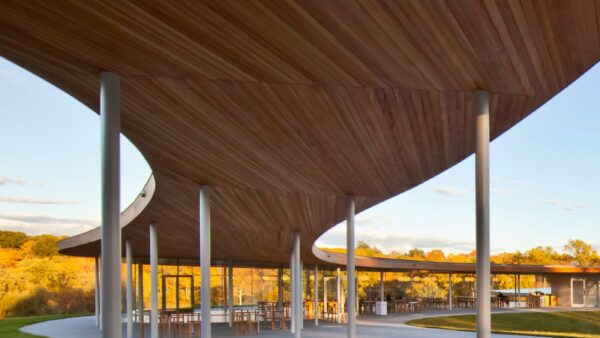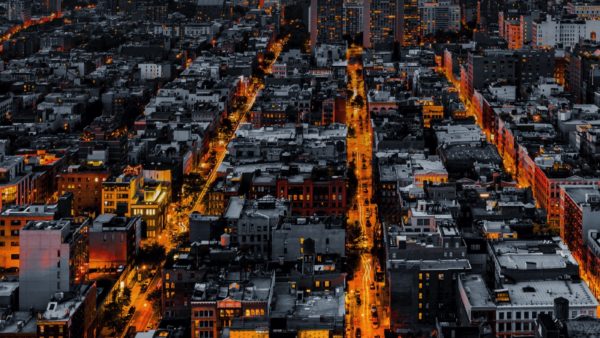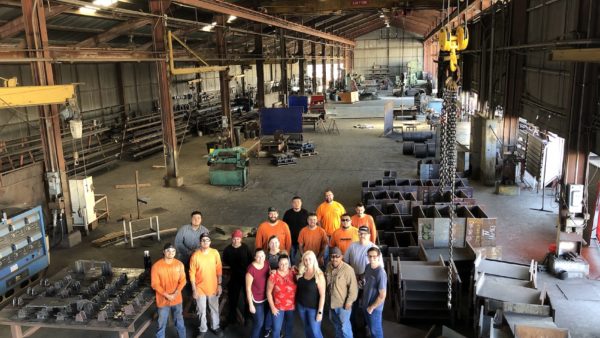Following another year of record-breaking temperatures, droughts and heatwaves across the world in 2021, it is time to look again at our options to manage summer heat, particularly in towns and cities, which suffer from the Urban Heat Island effect.
This occurs when darkly-paved roads, car parks and dark roofs absorb solar radiation and release it back as heat, instead of reflecting it back into the atmosphere, along with waste heat from buildings. It can lead to temperature differences between urban and rural areas of as much as 6-12ºC, particularly at night.
High summer temperatures are not only uncomfortable, but also lead to excess mortality, particularly among vulnerable groups, including the elderly, and those with disabilities and underlying health conditions.
Governments and people look to air conditioning to cool down but in the long-term, reliance on private AC for urban cooling would cost the planet dearly.
Owing to climate change-induced temperature increases, by 2050, the number of air conditioners globally is projected to grow from 1.6 billion to 5.6 billion. This would result in additional emissions, created by excess energy demand, that could add 0.5ºC of global warming, pushing the Paris Agreement target of 1.5ºC maximum beyond our reach.
Many air conditioners are cheap and inefficient window-mounted units. Studies of cities ranging from Phoenix to Tokyo show that large increases in these types of air conditioners can add as much as 1ºC to outdoor heat. This creates a feedback loop; if the outdoor temperature becomes hotter, air conditioners are needed for longer, thus increasing the outdoor temperature, and so on.
When air conditioners are stacked one above each other, floor after floor up the sides of buildings, they heat up the intake air of the AC units above, making them less efficient.
Worse, the AC units may not work when we need them most: electric grids are most likely to break down during peak use periods, and for most of the world this is determined by AC usage during the hottest days, when people are at greatest risk of heat-related deaths.
The strategy of indefinitely expanding air conditioning to cool buildings and people in warming cities will simply not work in the medium- and long-term.
So, what is the alternative to ever more air conditioners? One option is to cool the city and its neighbourhoods by altering the urban fabric itself.
“Smart surfaces” are defined by the Smart Surfaces Coalition (SSC) as any surface that better manages sunlight and rainfall than dark, impervious surfaces. They include reflective, porous and green surfaces that, if installed in combination with increasing tree and solar PV coverage in urban environments, can work to decrease the impact of heat in built-up areas.
Regular concrete has higher reflectivity than asphalt, shingles or slate, the most common roads and roofing surfaces. It can be increased by using lighter coloured materials in the concrete mix.
The material with the biggest impact is sand, which is much more visible in the surface of concrete than the typical aggregates used. In addition, urban vegetation, in the form of parks and green spaces, can, in combination with broad application of highly reflective surfaces, cool surrounding areas by as much as 5ºC.
The SSC’s coalition of leading health, planning, architecture, city policy, energy, affordable housing, energy and other organizations is dedicated to supporting expanded adoption of smart surfaces globally. Prior studies of potential city-wide smart surfaces adoption by Baltimore, El Paso, Philadelphia and Washington DC demonstrated smart surfaces to be a cost-effective, city-wide strategy to address climate change mitigation and adaptation that would also improve equity and create jobs.
The SSC’s study of Baltimore modelled 12 measures, ranging from planting more trees to making roof and car park surfaces porous and more reflective with lighter-coloured materials. This included the use of low and even negative carbon concretes, which are important shared objectives of the World Cement Association and the smart surfaces Coalition. According to this study, by 2050, adoption of a select set of smart surfaces could cool greater Baltimore by 1.7ºC and downtown Baltimore by 2.4ºC.
Additionally, the benefits to health, employment, tourism and lower energy bills are ten times larger than the costs: the net-present-value to Baltimore over 30 years could be as much as $20,000 per person.
The study also revealed that the greatest decreases in temperature could be achieved by putting smart surfaces in lower-income neighbourhoods, which are typically less green and built with more dark, impervious materials. Residents here are much more likely to live in inefficient buildings and disproportionately suffer from respiratory and other health problems.
While energy costs make up about 1% of total income for the highest-income renters in the USA, among the lowest-income renters, tenant-paid household energy costs are approximately 15% of income. This inequality has broad income, health, quality of life, and cost impacts. Smart surfaces, such as reflective roofs and trees, can cut these energy bills by up to a third.
It is clear that a cleaner and more effective solution than air conditioners is needed to ensure that our towns and cities remain habitable and safe in the face of global climate change. Implementing smart surfaces, in the form of urban greening and reflective surfaces can make a tangible difference to communities, particularly those who are already vulnerable to extreme heat.
- Greg Kats is founder and CEO of the Smart Surfaces Coalition; Ian Riley is CEO of the World Cement Association; Manon Burbidge is policy and communications manager at the World Cement Association.





